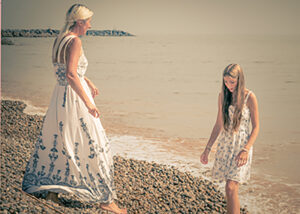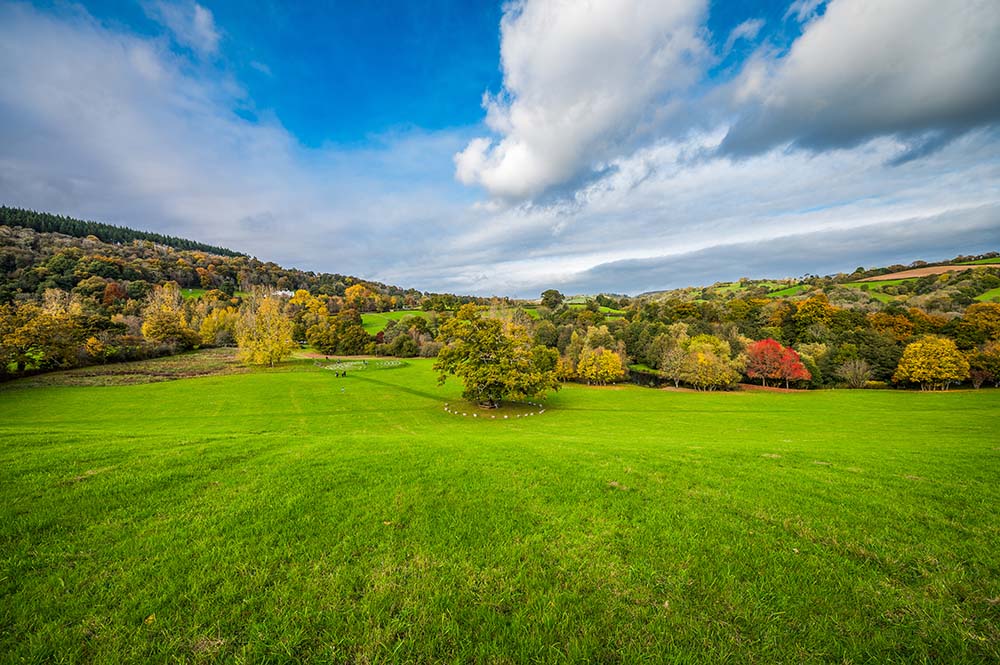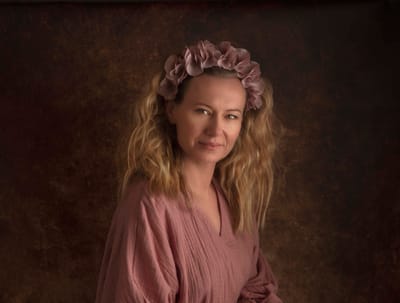Is the art of capturing perfect portraits confined within four studio walls? For Devon photographers, the answer lies beyond—outdoors in the stunning natural landscapes. Transitioning from a controlled studio setting to the unpredictability of outdoor shoots presents both challenges and opportunities for capturing authentic moments. In this guide, we delve into the essential gear and techniques needed for portrait perfection against Devon’s picturesque backdrops, teaching photographers how to seamlessly adapt and enhance their skills. Discover how the right equipment, lighting mastery, and perfect location can transform your photography from studio basics to outdoor brilliance.
Essential Gear for Portrait Photography in Devon
Choosing the right equipment is crucial for portrait photography in Devon, where the weather can be unpredictable, and the landscapes offer diverse backdrops. Weatherproof cameras and lenses are particularly important for outdoor shoots, as they ensure functionality in adverse conditions. This allows photographers to capture portraits without worrying about potential damage from rain or dust. The ability to adapt quickly to changing environments is vital, making weatherproof gear an essential investment for any portrait photographer working in this region.
Recommended gear for portrait photography in Devon includes:
- Weatherproof cameras
- Lenses for portrait settings
- Entry-level DSLR options
- Tripod choices
- Additional accessories for lighting
Selecting the appropriate cameras and lenses can significantly impact the quality of portraits. The Nikon D3500, for instance, is a favoured entry-level DSLR known for its good ISO range and ease of use, making it suitable for both beginners and professionals. For capturing finer details and achieving desired effects, lenses specifically designed for portrait settings are recommended. These lenses allow for better control over depth of field, enhancing the subject’s focus and background blur and contributing to more compelling portraits.
The right gear elevates portrait quality by offering greater control over camera settings and composition. Tripods, such as the Amazon basic tripod or the K and F Concept Tripod, are essential for stabilising shots, particularly in low-light conditions. Additionally, having the right lighting accessories can drastically improve the outcome of a photoshoot, ensuring that skin tones and details are accurately represented. With the proper equipment, photographers can confidently navigate both studio and outdoor environments, capturing portraits that resonate with clarity and emotion.
Mastering Lighting: From Studio to Natural Light in Devon
Studio lighting setups offer photographers control over every aspect of lighting conditions, enabling them to create the perfect atmosphere for portraits. The ability to adjust the intensity, direction, and colour of light ensures that skin tones are accurately represented and shadows are minimised. Studio environments allow for experimentation with different lighting configurations, such as using softboxes or reflectors, to achieve the desired effect. This control is particularly beneficial when working with complex or creative compositions, where precise lighting is essential to bring the photographer’s vision to life.
The Magic of Natural Light Photography in Devon
Natural light photography in Devon presents unique opportunities that studio settings simply cannot replicate. Devon’s landscapes provide a diverse backdrop, allowing photographers to harness the beauty of natural lighting conditions. The soft, diffuse light found in shaded areas or during golden hour enhances skin tones and adds a natural warmth to portraits. Unique to Devon, the coastal and rural settings offer a blend of textures and colours that can enhance the storytelling aspect of a portrait. While studio lighting offers precision, natural light in Devon allows for a more organic and spontaneous approach, capturing the essence of the environment and the subject.
Adapting to different lighting conditions requires awareness and flexibility. In harsh sunlight, using manual mode helps to properly expose skin tones, avoiding the pitfalls of automatic settings that might underexpose due to excessive light. Overexposing slightly can help manage this challenge. Doorways offer a perfect transition between indoor and outdoor lighting, providing soft, even light that flatters skin tones. By understanding and mastering these lighting techniques, photographers can seamlessly transition from controlled studio environments to the dynamic and ever-changing natural landscapes of Devon.
Choosing the Perfect Devon Location for Portraits

Selecting the perfect location is crucial in capturing the essence of a portrait. In Devon, photographers are spoiled for choice with its diverse landscapes and unique backdrops. Each location offers different lighting conditions, textures, and colours, which can significantly affect the mood and style of the portrait. A well-chosen setting not only enhances the subject’s features but also contributes to the narrative of the image, allowing the photographer to create more compelling and memorable portraits. Whether you’re looking for a serene natural environment or a vibrant urban scene, Devon offers a myriad of options to suit various styles and themes.
Recommended locations for portrait photography in Devon include:
- Dartmoor National Park
- Exeter’s Historic Quayside
- Lundy Island
- Clovelly Village
- The Jurassic Coast
Each of these locations provides distinct characteristics that can be leveraged to enhance portraits. Dartmoor National Park is famous for its rugged beauty and expansive moorland, perfect for dramatic and moody shots. Exeter’s Historic Quayside offers a picturesque urban backdrop with its charming architecture and vibrant atmosphere. Lundy Island provides a sense of adventure and isolation, ideal for more intimate portraits. Clovelly Village, with its cobblestone streets and quaint charm, adds a touch of nostalgia and elegance. The Jurassic Coast presents stunning cliffside views and unique geological features, offering a dramatic and awe-inspiring setting.
The right location elevates the storytelling aspect of a portrait by adding depth and context to the image. By carefully choosing a location that aligns with the subject’s personality or the intended theme, photographers can create a cohesive and impactful visual narrative. Natural settings often encourage genuine expressions and interactions, capturing moments that feel authentic and timeless. Through the thoughtful selection of Devon’s diverse landscapes, photographers can craft portraits that not only capture the subject’s likeness but also evoke emotion and tell a story.
Posing and Composition Techniques for Stunning Portraits
Posing plays a pivotal role in portrait photography, acting as a bridge between the subject’s personality and the final image. Basic posing techniques, such as the three-quarter turn or the S-curve, enhance the subject’s natural features and add depth to the photograph. When posing subjects, it is crucial to consider the lighting conditions and angles. For example, avoiding direct eye contact with the camera in harsh midday sunlight reduces the risk of unflattering shadows under the eyes. Instead, positioning the subject at a slight angle to the light source can create a softer, more flattering effect. Subtle adjustments, like tilting the head or shifting weight onto one leg, can transform a stiff pose into a dynamic and engaging portrait.
Creative Composition Ideas in Portrait Photography
Devon’s diverse landscapes offer a wealth of opportunities for creative composition. Photographers can use these environments to add layers and context to their portraits. For instance, incorporating natural elements like rolling hills or rugged coastlines can provide compelling backgrounds that enhance the overall narrative of the image. Experimenting with lens flares or shadow lines in harsh sunlight can add an artistic touch to portraits, using the light creatively to highlight the subject. Additionally, framing the subject within natural structures, such as archways or tree branches, can guide the viewer’s eye and add depth to the composition. These techniques not only enrich the visual appeal but also integrate the subject seamlessly into the surrounding landscape, creating a harmonious balance between the person and their environment.
Capturing authentic expressions is essential for creating portraits that resonate with viewers. Encouraging subjects to engage in activities they enjoy or feel comfortable with can lead to genuine smiles and expressions. This approach helps the subject relax, resulting in more natural interactions and emotions being captured. Spontaneous laughter or thoughtful gazes often reveal the subject’s true character, providing a glimpse into their personality. By focusing on these candid moments, photographers can forge a connection between the subject and the viewer, transforming ordinary portraits into captivating stories.
Tips for Seamless Transition from Studio to Outdoor Photography
Transitioning between studio sessions and outdoor portraits involves understanding and adapting to vastly different environments. What are the primary differences between studio and outdoor photography? Precision and control define studio photography, where lighting, background, and environment are meticulously managed to create a controlled setting. In contrast, outdoor portraits embrace natural light and open settings, which require adaptability due to variables like weather and natural elements. The ability to transition seamlessly between these environments is crucial for capturing compelling portraits in any setting.
To ensure a smooth transition from studio to outdoor photography, consider the following tips:
- Plan for weather variations
- Adjust camera settings accordingly
- Utilize portable lighting equipment
- Practice quick gear setup
- Communicate expectations with clients
How does planning for weather variations influence outdoor sessions? Planning for weather is essential, as it impacts lighting conditions and the overall mood of the shoot. Checking forecasts and preparing for potential changes ensures equipment and subjects are protected, allowing photographers to adjust their approach as needed. Whether it’s bringing rain covers or having alternative locations, preparation ensures the session proceeds smoothly.
Adapting to different environments enhances a photographer’s versatility and ability to capture diverse portraits. Why is environmental adaptation important for photographers? Each setting offers unique challenges and opportunities, from the soft, controlled lighting of studios to the dynamic and ever-changing conditions of outdoor locations. By mastering both environments, photographers can expand their creative repertoire, offering clients a broader range of styles and settings. This adaptability not only improves technical skills but also enhances a photographer’s ability to tell varied and compelling visual stories.
Final Words
Mastering the art of portrait photography in Devon involves selecting the right equipment, understanding lighting, and choosing stunning locations. Weatherproof gear ensures readiness for unpredictable conditions, while versatile settings optimise image quality. From studio to outdoors, lighting techniques in Devon’s unique landscapes offer creativity and adaptability. Choosing picturesque locations enhances storytelling, making every shot memorable.
Posing and composition add depth to portraits, capturing authentic expressions. Seamlessly transitioning between studio and outdoor sessions boosts a photographer’s skill set. From Studio to Outdoors: A Devon Photographer’s Guide to Perfect Portraits empowers photographers to create timeless images in diverse settings.
FAQ
What is the best shutter speed for studio portraits?
A: The best shutter speed for studio portraits is typically 1/125 to 1/200 of a second. This setting helps to freeze motion and keep images sharp under controlled lighting conditions.
How does Annie Leibovitz take photos?
A: Annie Leibovitz takes photos by using a combination of natural lighting and carefully planned composition. She captures the essence and emotion of her subjects through meticulous attention to setting and context.
How do I look good in portrait photos?
A: To look good in portrait photos, work on your posture and engage with the camera naturally. Relax your shoulders, elongate your neck, and slightly tilt your head to avoid shadows and enhance features.
How do freelance photographers make a living from their photographs?
A: Freelance photographers make a living through a mix of client work, selling prints, and licensing images. They often diversify their income by offering workshops and online courses and utilising social media for marketing.




